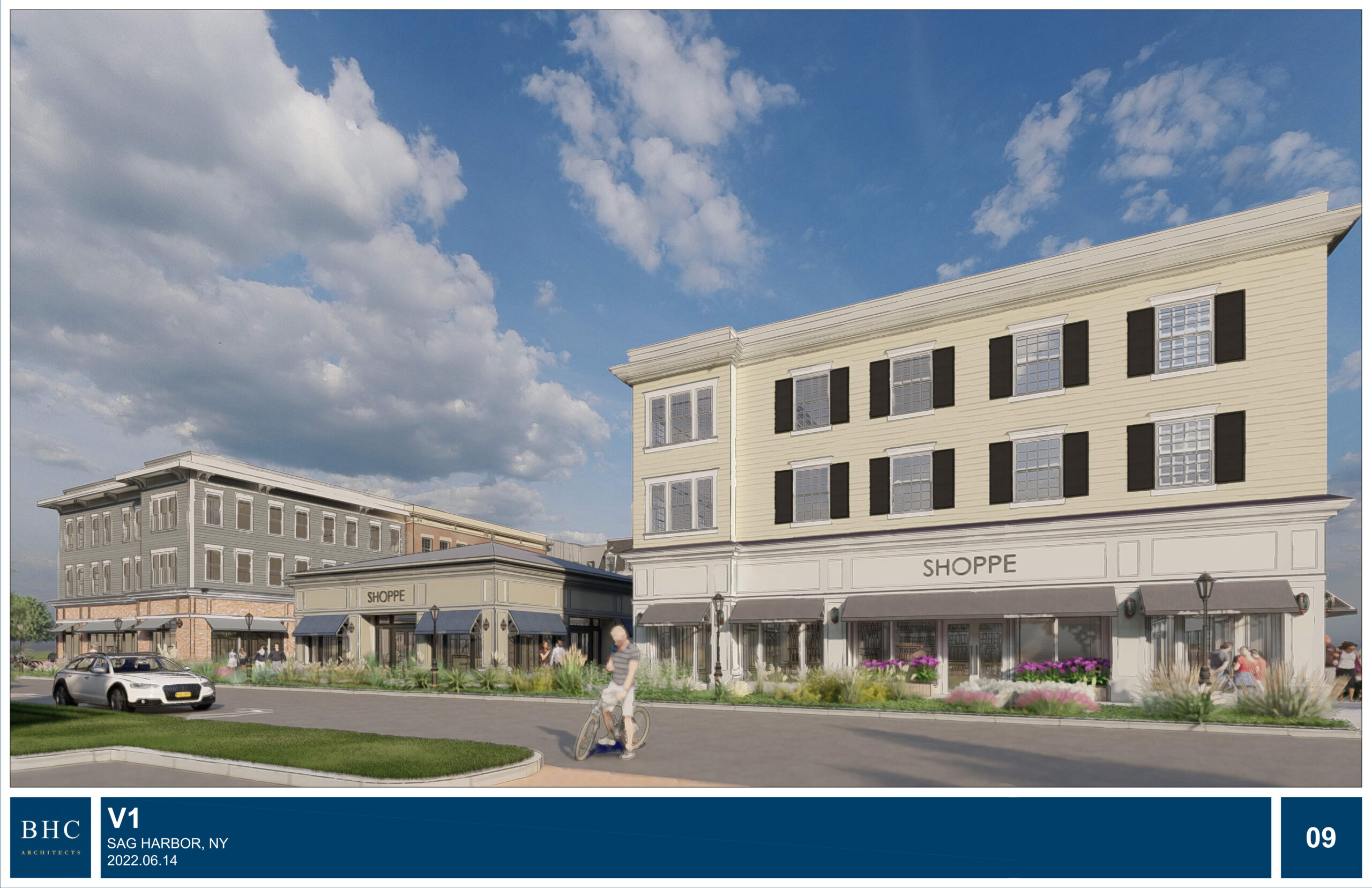
A team of Sag Harbor architects, led by Lee Skolnick, took the unusual step this week of meeting with Adam Potter, who has proposed a 79-unit affordable housing and commercial development in the heart of the village, to offer suggestions that they hope will guide the design of the project in ways that will make it more palatable to residents.
Skolnick, whose firm has recently designed a major affordable housing development in El Salvador and undertook an unsolicited design study for a 40-unit affordable development on 12 acres owned by East Hampton Town, said he had attended a recent Village Board meeting at which Potter’s team, including architect Salvatore Coco of BHC Architects, presented an overview of the plans to create apartments on the second and third floor of a single large building that would have commercial uses on the ground floor. A smaller, one-story commercial building would be included in the proposal.
The development is proposed for 1.44-acre site north of Rose Street and east of Bridge Street behind the village business district. Critics have already said the site lacks sufficient parking, would require a costly expansion of the village sewer system, lies in a flood zone, and will require environmental remediation of remnants of contamination from a former Superfund site to the north.
“As I feared, the project looked completely wrong to me on a number of levels for Sag Harbor,” Skolnick said of his first impression. “I don’t think it had any authenticity or integrity.”
Skolnick said he decided he could fight the project at every step of the way, “or I could call Adam Potter.” He said he chose the latter approach — and despite telling Potter that his proposal “just looks horrendous,” Skolnick said the conversation went surprisingly well, with Potter asking, “What would you do?”
Skolnick said he told Potter he had made a major mistake by springing his design without any preliminary discussions with stakeholders in the village. “There was almost no possibility you’d get any response but a negative one,” Skolnick said he told Potter. “People don’t respond well to surprises like this.”
He proposed that Potter let him assemble a group of architects who live or work in Sag Harbor and allow them to discuss the plans and offer their advice.
That group — consisting of Christopher Coy, Maziar Behrooz, Nilay Oza, Allen Kopelson and Skolnick’s partner, Paul Alter — met Tuesday with Potter. Coco, who Skolnick said “listened patiently, if a bit defensively,” also attended via Zoom.
“It was a very frank and open discussion about what we thought was wrong with the design,” Skolnick said. “I didn’t think it was our place to question the entire premise. We all know Sag Harbor needs affordable housing.”
Skolnick said the group had not decided what the next step would be, but he anticipated it would meet several more times to offer suggestions.
“Adam was very open to people’s ideas,” Skolnick said. “He knows, should he pursue the design he presented, he is going to face tremendous opposition, and not just from us. Sag Harbor is a lot like Greenwich Village. People love the village and they are not afraid to speak their mind.”
Now, he concluded, “the ball is in his court.”
Potter was unavailable for comment on Tuesday, but his attorney, Tiffany Scarlato, responded on his behalf.
She said Potter’s willingness to listen to suggestions showed he was trying to be transparent about his plans, but she stressed that anyone thinking the proposal would be scaled back in a major way was bound to be disappointed.
“If they don’t want it, we won’t build it,” she said, “but I don’t want to hear any more about how they support affordable housing.
“This is a balancing act for the developer, the property owner and the financing,” she continued. “To get this to balance correctly is not easy to do. It’s a minor miracle, really, especially in an environment where real estate prices are what they are.”
Scarlato said the Sag Harbor review process can be cumbersome, with “too many chefs spoiling the broth,” and that it was a good idea to allow people with some expertise in the field an opportunity to review the plans before the formal process begins.
“It was an initial kickoff meeting to get people in the same room to talk,” she said. “The idea is to get reputable local architects to give input that might actually work” instead of having people show up during the review process with nothing but complaints. “If you want to help, help,” she said. “Don’t just complain.”
On Tuesday, Mayor Jim Larocca said there is more paperwork to be submitted before the village’s environmental consultants, Nelson Pope Voorhis, can sign off on the application as “complete,” a step that is required before the formal review process can begin. Scarlato said elements of the site plan have yet to be completed, but once they are, the application will be ready to go.
Skolnick said he had many of the same complaints heard in the village about issues like parking, drainage, and wastewater removal, but he said his concerns were more about what he said were design shortcomings.
“I said to Adam, ‘You have a lot of challenges that you have taken on,’” citing the location of the property, which he described as an island cut off from the rest of the village.
He said he did not like the designer’s attempt to make the facades of the buildings look historic. “I hate fake history,” he said. “It never has integrity.”
Skolnick said the village “has always been a place of creativity. I don’t think we should jump to any conclusions. We need to give it a lot of thought and try to come up with some solutions. I think we could set it on the right track in a matter of weeks.”